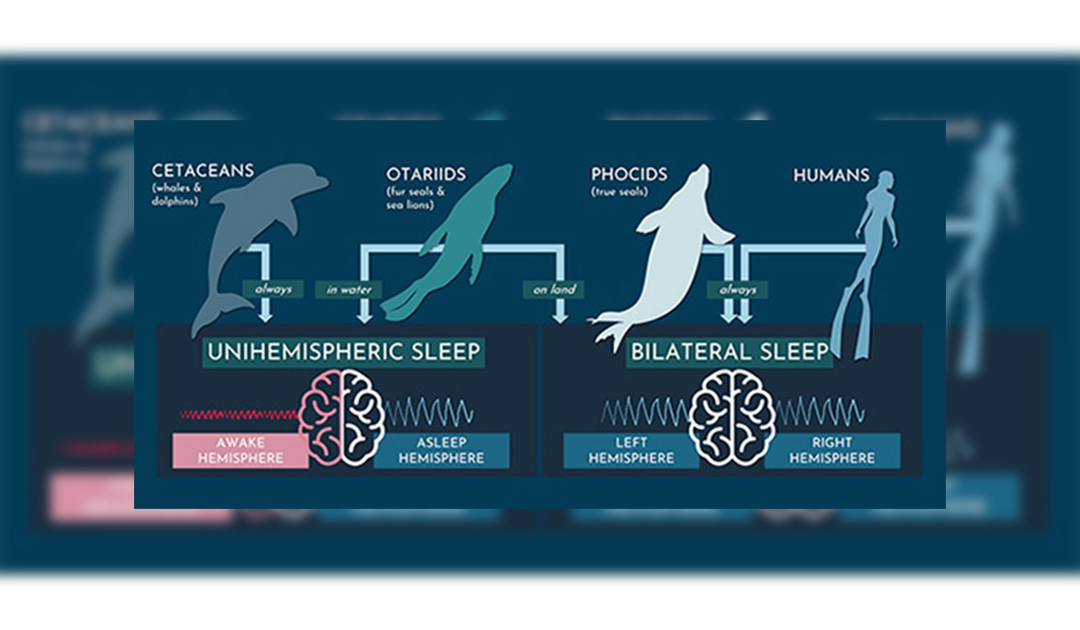
Anyone who has observed elephant seals on the beach can certainly confirm that they spend a lot of time sleeping. During their time ashore, they indeed need sleep, because they hardly get any when they are at sea. Californian researchers have now been able to show for the first time, based on brain activity, that elephant seals and probably other seals as well only sleep a maximum of two hours per day during their food trips. Among mammals, only elephants sleep as little.
Northern elephant seals travel more than 10,000 kilometers during their approximately eight-month feeding trips between California and Alaska. So they need to get some sleep while at sea, avoiding predators like orcas or sharks as much as possible. Unlike whales, dolphins, and otariid seals, phocid seals cannot alternately turn off one hemisphere of the brain to sleep. They developed a different strategy, which has now been uncovered thanks to a sophisticated method.
“For years, one of the central questions about elephant seals has been when do they sleep,” said Daniel Costa, professor of ecology and evolutionary biology and director of the Institute of Marine Sciences at the University of California Santa Cruz.
To track the elephant seals’ sleep patterns, the research team, led by the University of California Santa Cruz, combined dive profiles and acceleration data with the seals’ brain waves for the first time. The team developed a neoprene hood to which the same electroencephalography (EEG) sensors that are used in human sleep research are attached. A total of 13 young females were equipped with the EEG hoods, with five of the animals being observed in a controlled laboratory environment and the other eight in the wild.
The study, which also involved a scientist from ETH Zurich, was published in the journal Science.

The results show that elephant seals sleep an average of only two hours per day when they are at sea on their month-long foraging expedition. They make several deep 30-minute sleep dives a day during which they sleep for about ten minutes, sinking into the depths in a spiral as they sleep, sometimes even remaining motionless on the seafloor. During the breeding season, however, they sleep on the beach for about ten hours.
“The dive records show that they are constantly diving, so we thought they must be sleeping during what we call drift dives, when they stop swimming and slowly sink, but we really didn’t know,” says Costa, who has led UCSC’s elephant seal research program at the Año Nuevo Sanctuary for more than 25 years. “Now we’re finally able to say they’re definitely sleeping during those dives, and we also found that they’re not sleeping very much overall compared to other mammals.”

As long as they are at sea, elephant seals rival African elephants for the shortest amount of sleep per day. Until now, it has been assumed that among mammals, African elephants require the least amount of sleep, about two hours per day.
A safe place to sleep
Elephant seals are most vulnerable to predators such as sharks and killer whales when they are at the surface in the open ocean, so they only spend a minute or two breathing at the surface in between dives.
“They’re able to hold their breath for a long time, so they can go into a deep slumber on these dives deep below the surface where it’s safe,” explained Jessica Kendall-Bar, first author of the study.
The EEG recordings show how the seals enter the deep sleep stage, called slow-wave sleep, during controlled descent and then enter rapid-eye-movement (REM) sleep, in which they turn belly-up due to sleep paralysis and drift down in a “sleep spiral”. In shallower waters over the continental shelf, they sometimes sleep on the seafloor.
A “masterstroke”
Kendall-Bar, then a doctoral student, developed a highly accurate algorithm using data on the brain activity and diving behavior of the 13 female elephant seals. Using this algorithm, she was able to identify sleep phases also in other individuals, of which only the dive data were available, but no EEG recordings. This allowed her to estimate the sleep patterns of an additional 334 adult seals.
“Because of the dataset that Dan Costa has curated over 25 years of working with elephant seals at Año Nuevo, I was able to extrapolate our results to over 300 animals and get a population-level look at sleep behavior,” said Kendall-Bar, who now plans to use similar methods to study brain activity in other seal and sea lion species, as well as in human freedivers.
“It’s an amazing feat to pull this off,” said Terrie Williams, professor of ecology and evolutionary biology at UCSC and co-author of the study. “She developed an EEG system to work on an animal that’s diving several hundred meters in the ocean. Then she uses the data to create data-driven animations so we can really visualize what the animal is doing as it dives through the water column.”
The results could help Northern elephant seals getting better protected as a “sleepscape” of their preferred resting areas has now been revealed. “Normally, we’re concerned about protecting the areas where animals go to feed, but perhaps the places where they sleep are as important as any other critical habitat,” Williams said.
Julia Hager, PolarJournal
Link to the study: Jessica M. Kendall-Bar et al. ,Brain activity of diving seals reveals short sleep cycles at depth.Science380, 260-265(2023).DOI:10.1126/science.adf0566
More on the subject:





